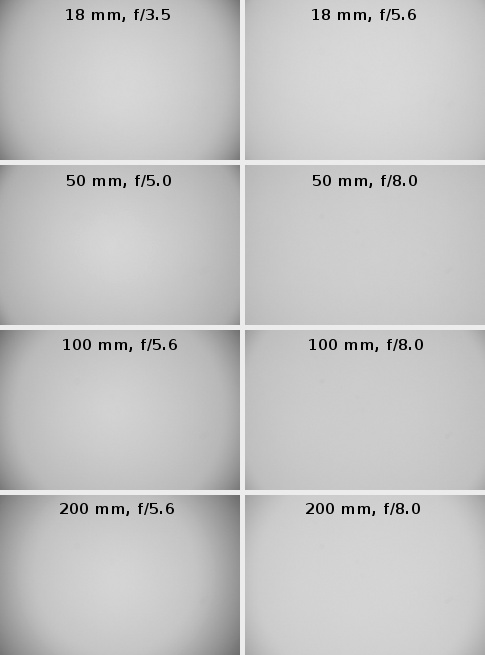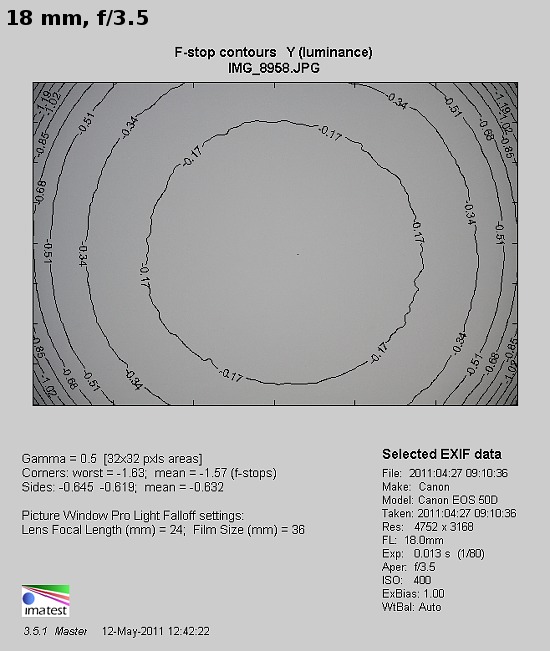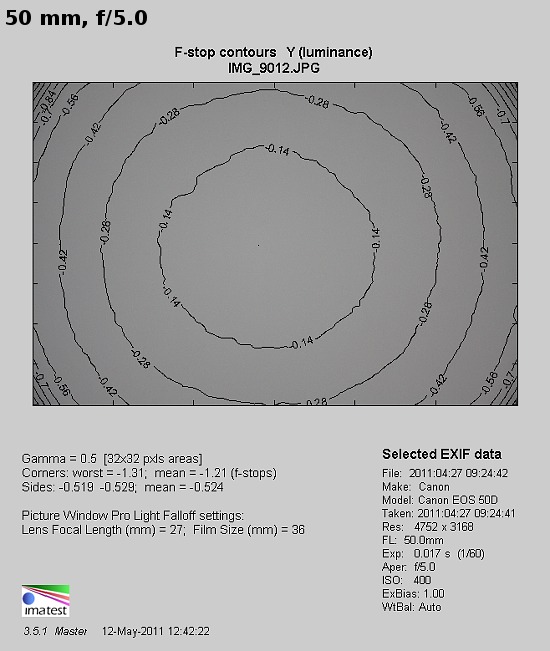Canon EF-S 18-200 mm f/3.5-5.6 IS
8. Vignetting

At the shortest focal length and by f/3.5 aperture the brightness loss in the frame corners amounts to 42% (-1.57 EV) and it decreases to 33% (-1.17 EV) by f/4.0. By using f/5.6 and f/8.0 you can reduce the vignetting to the level of 18% and 15% respectively. Further stopping down doesn’t provide any measurable influence on the level of this aberration.
Please Support UsIf you enjoy our reviews and articles, and you want us to continue our work please, support our website by donating through PayPal. The funds are going to be used for paying our editorial team, renting servers, and equipping our testing studio; only that way we will be able to continue providing you interesting content for free. |
- - - - - - - - - - - - - - - - - - - - - - - - - - - - - - - - - - - - - - - - - - - - - - - -
Near 30 mm the vignetting is the lowest and at the maximum relative aperture it gets to 25% (-0.83 EV). It becomes practicably imperceptible already by f/5.6 where it amounts to only 12%. It disappears almost completely by f/8.0.
On further increase of focal lengths we can observe a gradual rise of the vignetting too. At 50 mm and by f/5.0 this aberration reaches 34% (-1.21 EV). On stopping down to f/5.6 the light fall-off in the corners amounts to 22% (-0.71 EV) and it becomes not very bothersome by f/8.0 (11%). In the case of 100 mm focal length the maximum relative aperture gives you the vignetting level of 42% (-1.59 EV) and by using f/8.0 you can reduce this aberration to 19% (-0.62 EV). Only by f/11 it becomes imperceptible, amounting to just 11%.
The most serious problems can be noticed by f/5.6 and at the maximum focal length where the vignetting is 45% (-1.73 EV) and it decreases to 22% (-0.71 EV) by f/8.0. By f/11 and f/16 it becomes negligible, amounting to 13% and 8% respectively.
In this category the Canon once again failed to impress us. As at the shortest focal length it features vignetting levels typical for this class of equipment (although you can also find instruments with a vignetting level of 35% there) the longer end is problematic – the Canon’s results are among the weakest. They present themselves badly especially if you bear in mind that a part of 18-2xx mm devices were tested on reflex cameras with 1.5x multiple sensors so a bit bigger than the Canon’s detector, bound to cause a bit more problems if you want to get good results. Despite that fact the Nikkor 18-200 mm VR could show the vignetting on the level of 32% at the maximum focal length - significantly lower than that of the Canon.
 |
 |
 |






